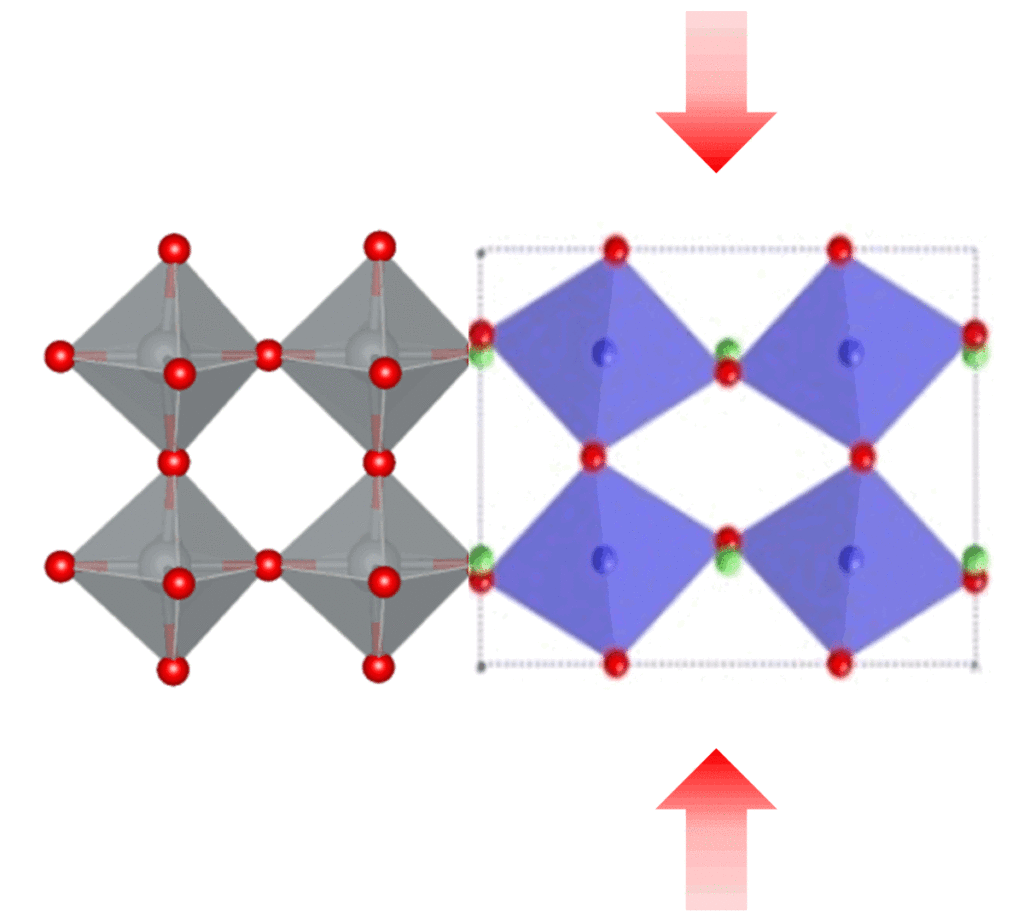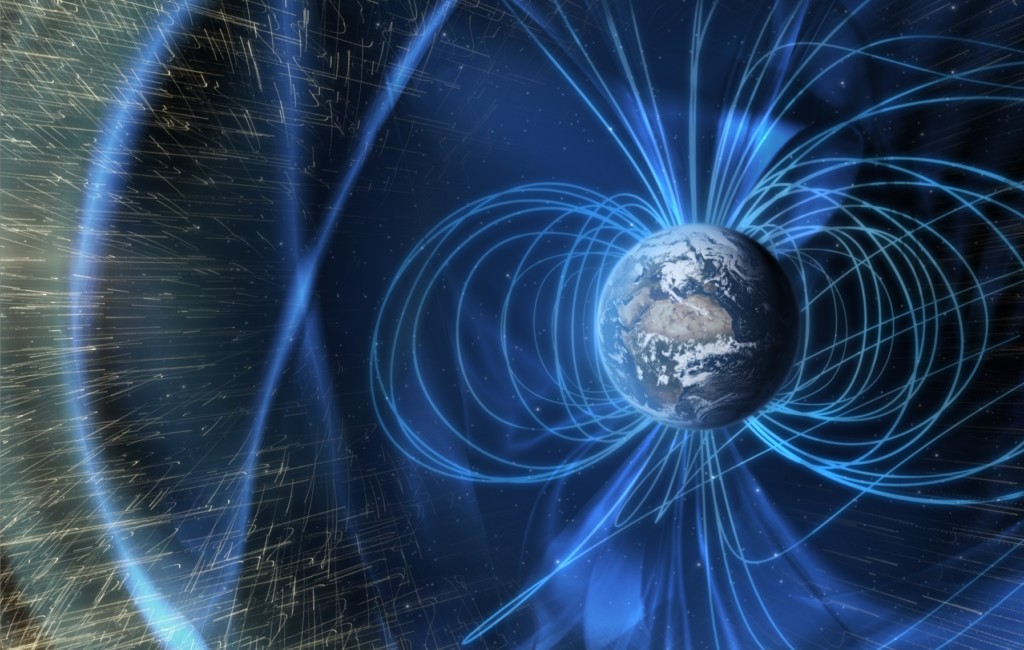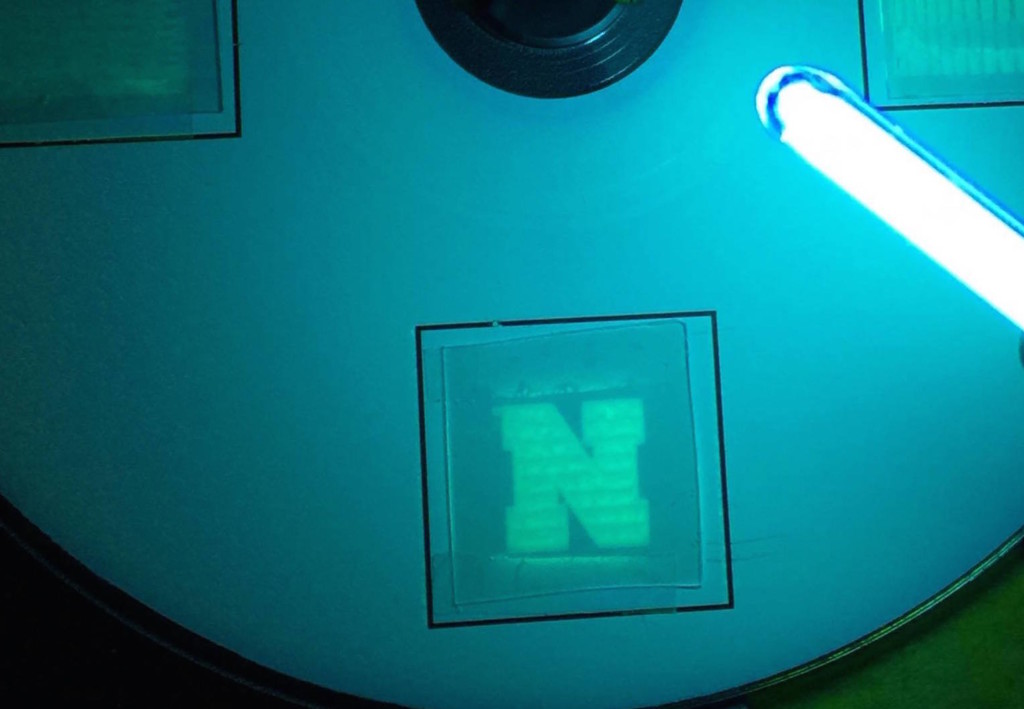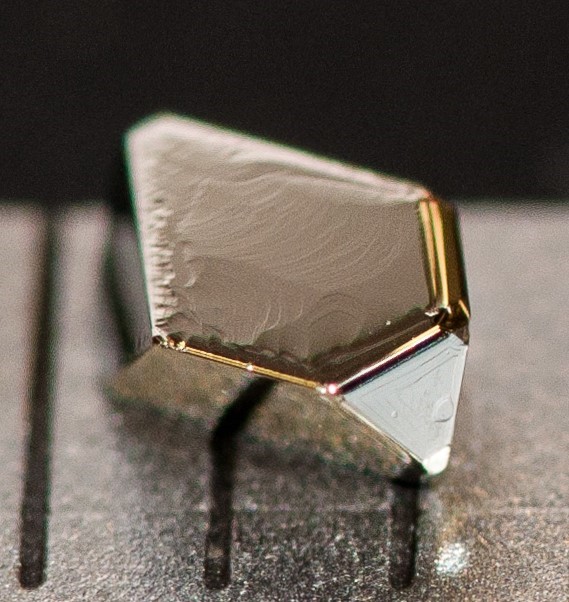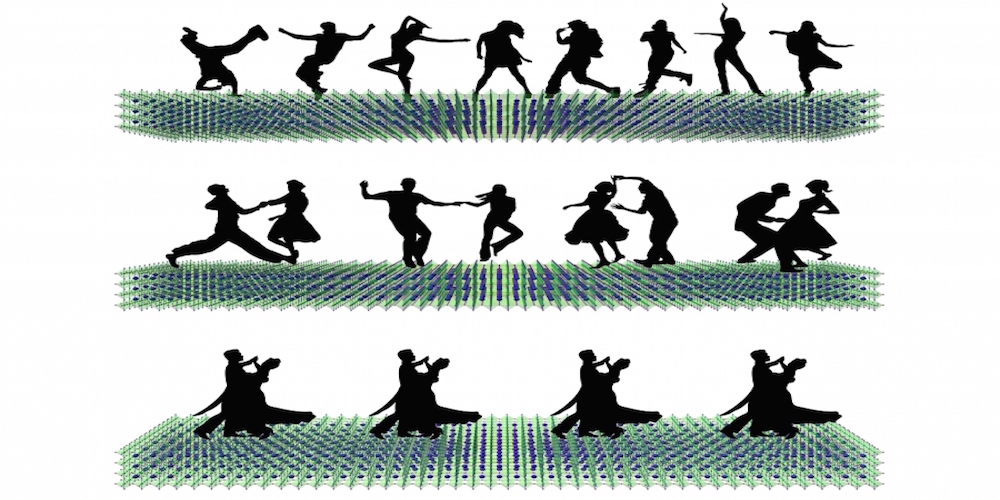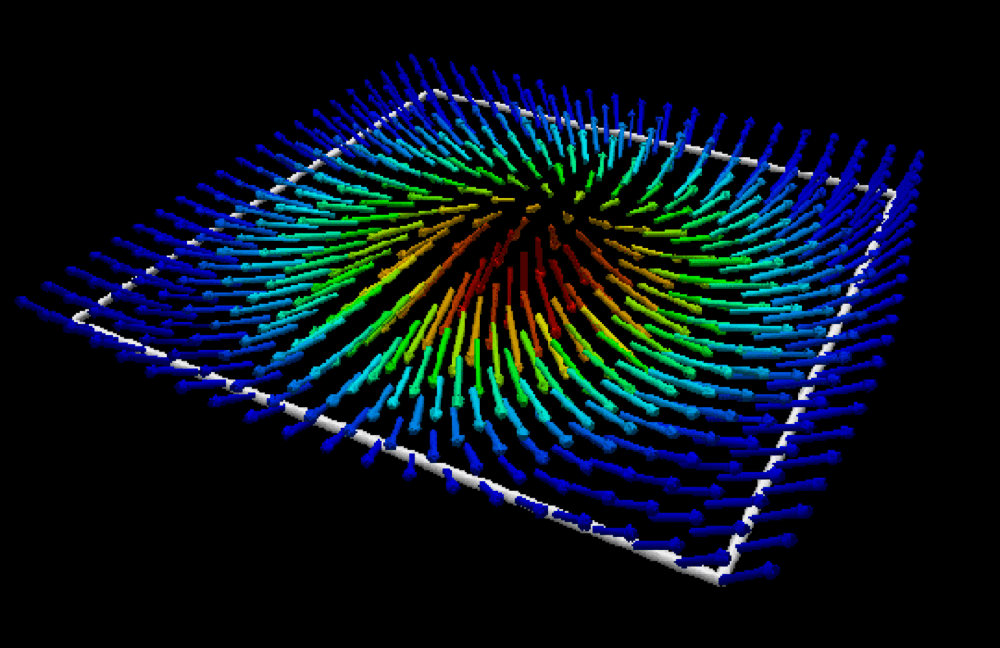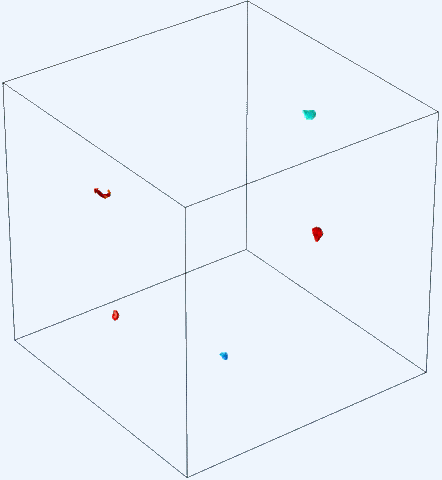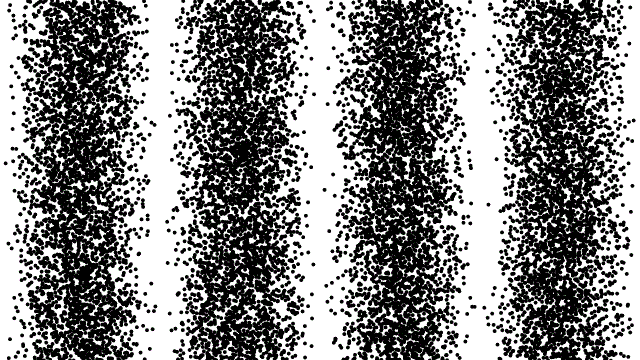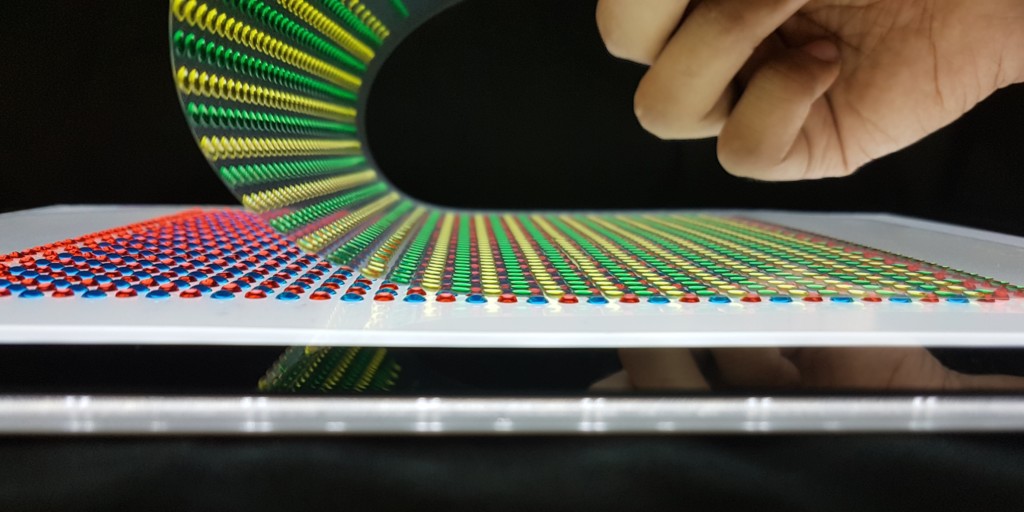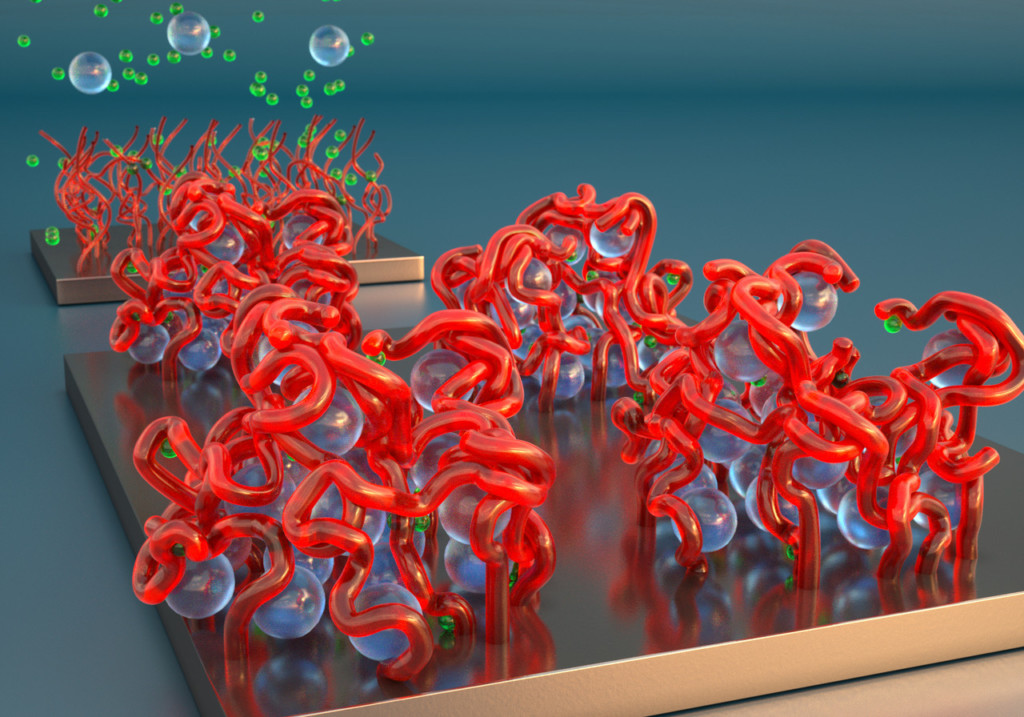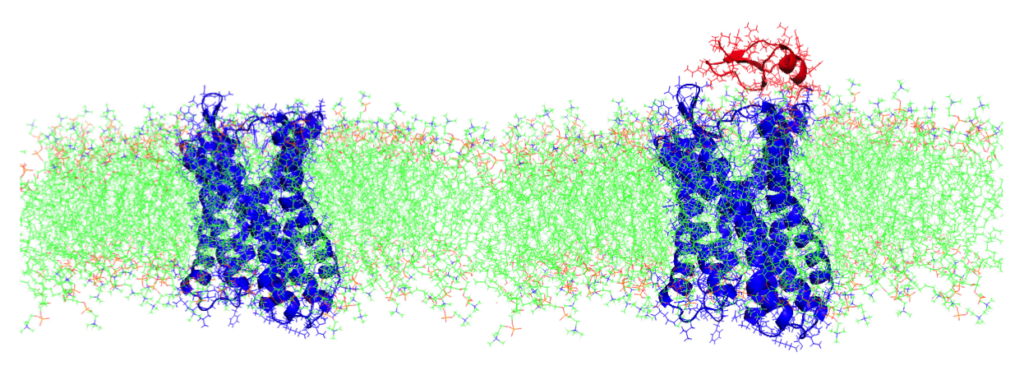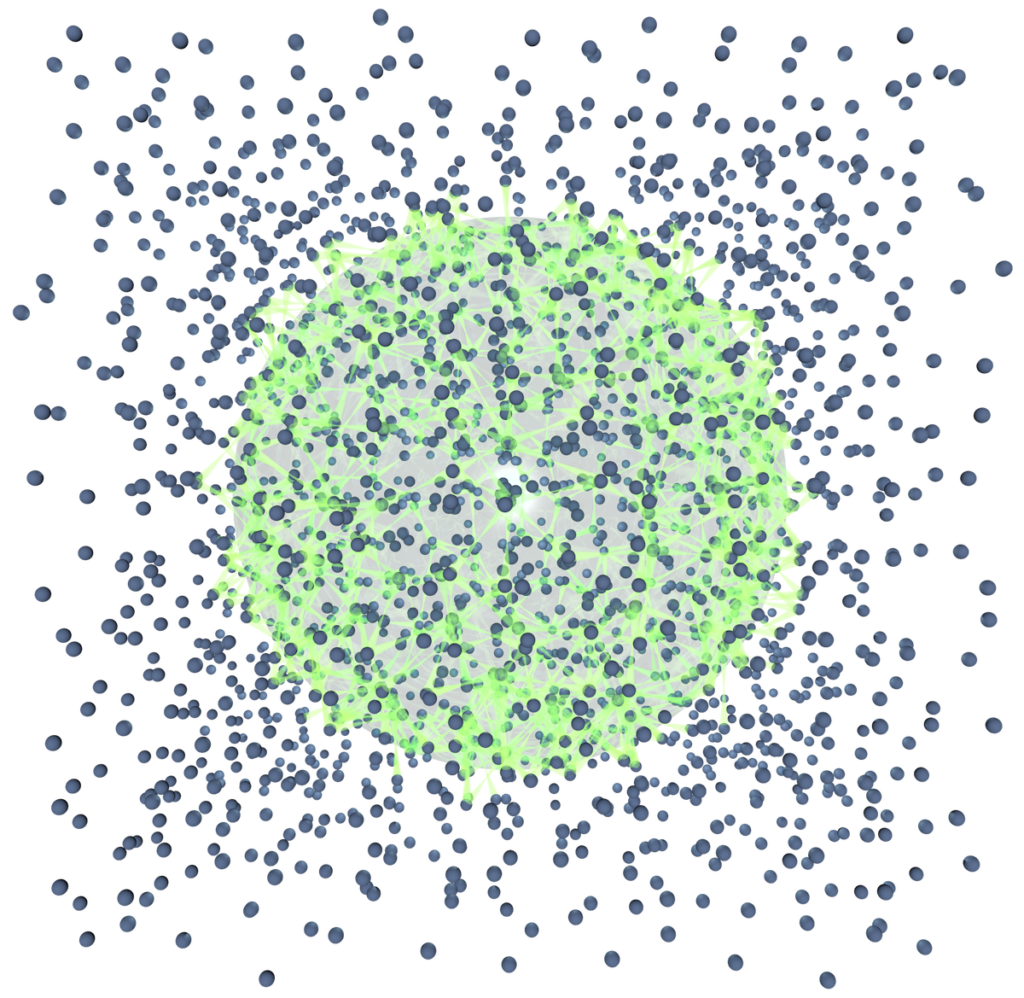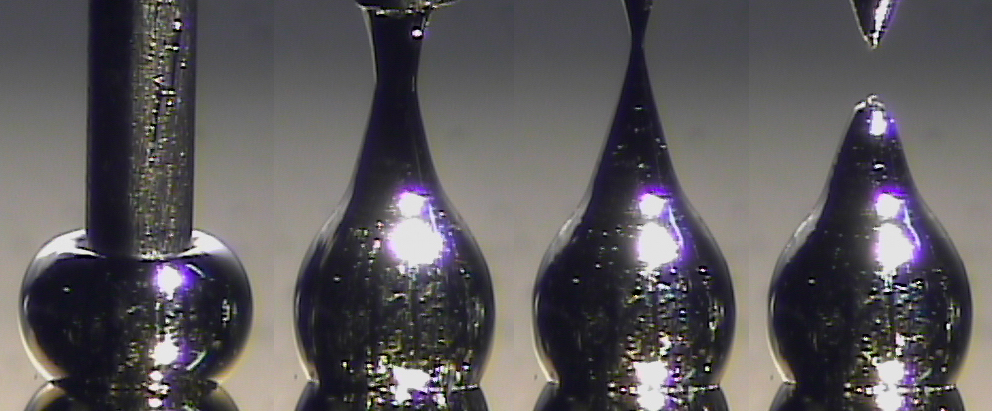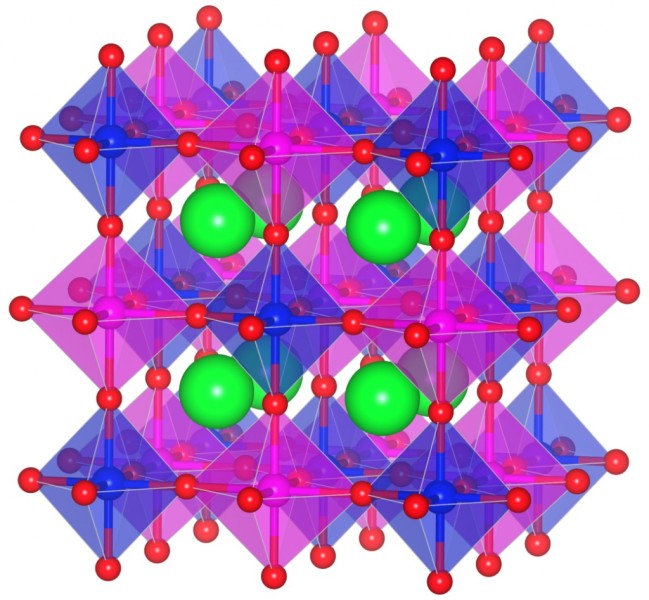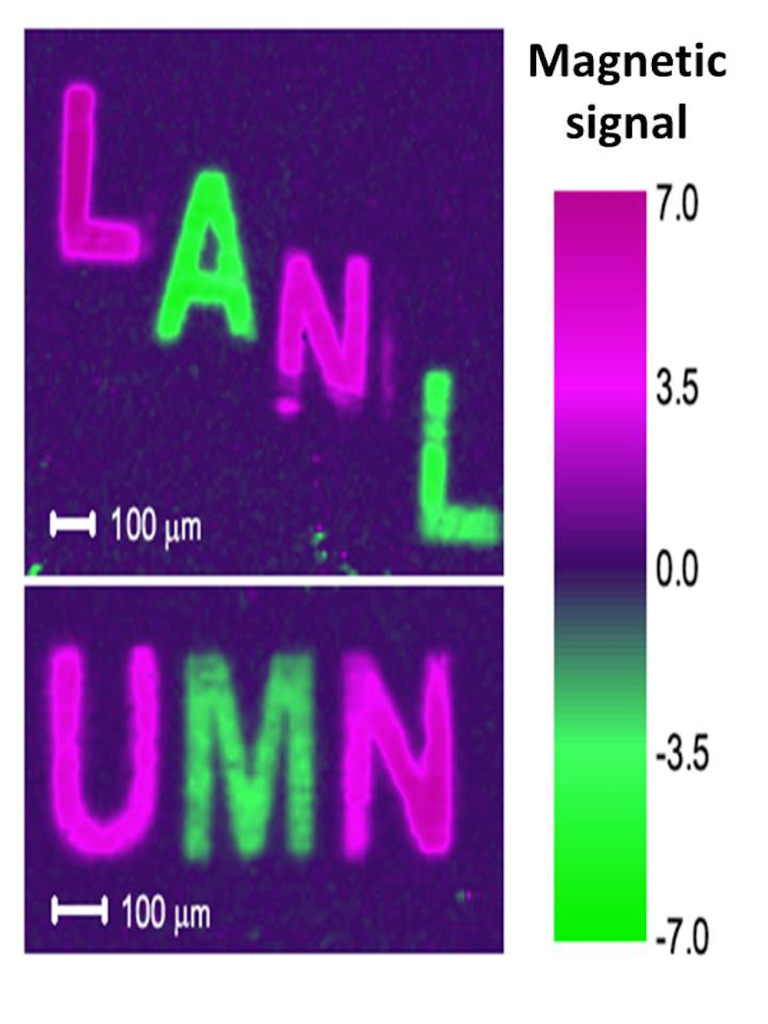FUNSIZE RESEARCH
Posts showcasing the wonder, beauty, and potential of cutting-edge materials research—freely contributed by physicists from across the country. (Funsize Physics is not responsible for any minds that are blown.)


Would you rather have data storage that is compact or reliable? Both, of course! Digital electronic devices like hard drives rely on magnetic memory to store data, encoding information as “0”s and “1”s that correspond to the direction of the magnetic moment, or spin, of atoms in individual bits of material. For magnetic memory to work, the magnetization should not change until the data is erased or rewritten. Unfortunately, some magnetic materials that are promising for high density storage have low data stability, which can be improved by squeezing or stretching the crystal structures of magnetic memory materials, enhancing a material property called magnetic anisotropy.


Neutron radiation detection is an important issue for the space program, satellite communications, and national defense. But since neutrons have no electric charge, they can pass through many kinds of solid objects without stopping. This makes it difficult to build devices to detect them, so we need special materials that can absorb neutrons and leave a measurable signature when they do. Researchers at the University of Nebraska-Lincoln are studying the effects of solar neutron radiation on two types of materials on the International Space Station (ISS), using detectors made of very stable compounds that contain boron-10 and lithium-6.


To increase our use of solar energy, we need to create more efficient, stable, and cost-effective solar cells. What if we could use an inkjet printer to fabricate them? A new type of solar cell uses a class of materials called perovskites, which have a special crystal structure that interacts with light in a way that produces an electric voltage. We've developed a method to produce perovskite thin films using an inket printer, which in the future could pave the way to manufacture solar cells that are surprisingly simple and cheap.


Think of the hard disk in your computer. Information is stored there in the form of magnetic "bits." But do you know how small a magnet can be? Some molecules make magnetic magic, and these special molecules may give rise to the ultrafast, high precision, low power devices of the future.


For the past two decades, giant bubble enthusiasts have been creating soap film bubbles of ever-increasing volumes. As of 2020, the world record for a free-floating soap bubble stands at 96.27 cubic meters, a volume equal to about 25,000 U.S. gallons! For a spherical bubble, this corresponds to a diameter of more than 18 feet and a surface area of over 1,000 square feet. How are such large films created and how do they remain stable? What is the secret to giant bubble juice? Click to find out more!


Superconductors are materials that permit electrical current to flow without energy loss. Their amazing properties form the basis for MRI (magnetic resonance imaging) devices and high-speed maglev trains, as well as emerging technologies such as quantum computers. At the heart of all superconductors is the bunching of electrons into pairs. Click the image to learn more about the "dancing" behavior of these electron pairs!


In most magnetic materials, the magnetic moments of individual atoms are aligned parallel to one another and point in the same direction. In special structures called skyrmions and antiskyrmions, however, they are arranged in a spiraling pattern. Their stability and compact size makes skyrmions and antiskyrmions especially useful for encoding lots of data in a small space. But a few questions need to be answered before skyrmion-based technology can be used in your iPhone or other memory devices. First, why do these magnetic structures form in some materials and not others? How can we design a system where they will form? And how can we generate these structures on demand? Click to find out!


Recent progress in materials science has led to the creation of new magnetic materials in which the magnetism follows complex patterns. The formation of these patterns depends on a phenomenon called spin-orbital coupling. Because they can be manipulated by electric currents and temperature changes, materials exhibiting these interesting magnetic patterns may have applications in magnetic memories and logic devices. Click to learn how!


In phase-change memory (PCM), nanoscale volumes of a special kind of glass compound are heated by very short electrical pulses, causing the atomic structure of the material to switch between an ordered phase and a disordered phase. These phase-change materials have been used for years to store data on rewritable CDs and DVDs, but until recently, the large energy required to change the state of the material has made it impractical for electronic memory. If this challenge can be overcome, phase-change memory can be integrated with conventional silicon electronics for high-capacity data storage and more efficient computation. Click to read more about how we are working to make this new technology a reality!


We tend to think of materials as either electrical conductors or insulators: some materials, like metals, have low electrical resistance and conduct electricity easily, while others, like wood or plastic, have high electrical resistance and do not readily conduct electricity. Strange experimental results, however, reveal large fluctuations in the electrical resistance of thin metallic nanowires when a magnetic field or charge difference is applied to them. Click to learn how a more nuanced understanding of electron behavior helps to explain these variations in electrical resistance that may revolutionize the tech industry!


You may know helium as the gas that can make balloons and blimps float. At the University of Maryland, scientists are using this element to study the exotic physics of quantum vortices: the tornadoes or bathtub-drain whirls of the quantum world. Knowing how quantum vortices work could help us better understand other turbulent events (like wind and ocean currents), as well as the complex physical behavior of superconductors and neutron stars.


The electric eel's ability to generate incredibly large amounts of electric power from within its body has fascinated scientists for centuries. In fact, some of the world’s first batteries were inspired by studies of this amazing animal. Now, scientists have developed a new eel-inspired energy source that may one day be used to power electronics implanted within the human body.


Very small structures, much smaller than the human eye can see, often fall in the size range of nanometers. By understanding how the molecules that make up these structures interact, we can engineer them to do many special things that cannot be done at a larger scale. One exciting structure is a polymer brush, in which long, chain-like molecules called polymers are tethered at one end to a surface and stick up from the surface like bristles on a hairbrush. Polymer brushes can be used to keep bacteria away, provide an exceptionally smooth surface for items to slide across, or trap other molecules in solution like a hairbrush traps loose hair. In order to engineer polymer brushes that will perform as desired for a given application, we must understand the physics of how the molecular bristles move, and the chemistry of how they interact with their environment.


Biophysics is a field that applies knowledge of physics to understand and explain biological phenomena. Biophysicists study life at different levels, from atoms and molecules to cells, organisms, and their environments. They focus on questions such as how proteins function, how nerve cells communicate, how viruses invade human cells, how plants absorb sunlight and convert it into food, and so on. Biophysics has contributed significantly to improving human health in multiple ways, and the study of protein-protein interactions is an especially important biophysical topic. By exploring the molecular basis of complicated biomedical diseases, biophysicists help to develop methods to treat these diseases.


At low temperatures, helium—the same substance that makes balloons float—becomes a special type of liquid known as a superfluid, which has zero viscosity. It's like the anti-molasses! The properties of superfluids are governed by the laws of quantum mechanics. More specifically, the atoms in superfluid helium are “entangled” with each other, allowing them to share information and influence each other’s behavior in ways that are totally foreign to our everyday experience, and which Einstein famously described as "spooky action at a distance." Better still, scientists have recently discovered that the law controlling entanglement between different parts of a helium superfluid is the same as that governing the exotic behavior of black holes in outer space.


Most electronics are made out of rigid materials like silicon, but it is possible to make wires and other electronics using entirely soft and squishy materials. By utilizing liquid metal nanoparticles, we can even draw wires by hand using light pressure from a magic marker to squish the particles together.


It's a solid . . . it's a liquid . . . it's a LIQUID CRYSTAL! Researchers at the University of Wisconsin-Madison Materials Research Science and Engineering Center are investigating how the unique properties of liquid crystals allow them to act as environmental sensors, detecting toxins in the environment. In this video, we give a brief overview of what liquid crystals are and how their properties can be utilized to improve the world.


Many solid materials have a crystal structure, with atoms that exist in a particular, organized arrangement. The degree of organization can vary among crystals, however. High-quality crystalline materials are the foundation of many familiar devices, such as integrated circuits and solar cells. A better understanding of these materials and how to produce them is important for developing new technologies.






